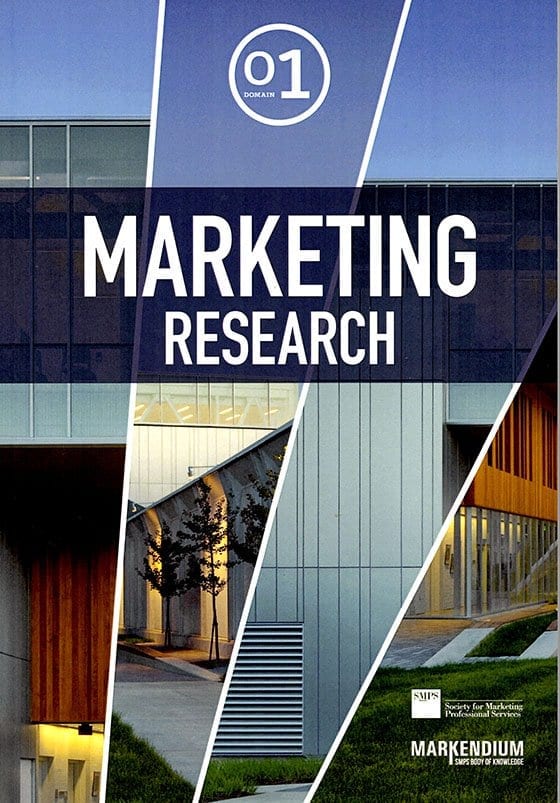Fall is a Good Time for 2026 Planning Is it time to build your next…

Society for Marketing Professional Services – Certified Professional Services Marketer Study Guide Epiphany
The last case study activity gives an excellent overview of the entire process for studying for the exam, beginning with marketing research.
I’ve been studying for the Certified Professional Services Marketer exam ever since I joined SMPS in 2004. I wanted to grow the agency in the building industry and on the advice of Pete Strange, the president of Messer Construction, I joined SMPS. He said it was the best way to get into marketing into the AEC space.
I joined and was accepted quickly into the group by a great bunch of marketers for local architectural, construction and engineering companies. Served on the board under Alison Tepe Guy and Jason Ulmenstine for a few terms. It was going well, and I was learning a lot until the market crashed in 2008. Nearly 50 percent of the professionals in the industry were out of a job.
I put studying for the exam on the back burner in lew of passing the U.S. Green Building Council Leadership in Energy and Environmental Design Accredited Professional exam and getting my office awarded LEED Platinum in 2011.
This type of marketing is much more closely aligned with the type of industrial marketing Lohre & Associates has been doing my entire 40-year career; large, expensive mining, chemical, electrical and mechanical machinery. Selling the design and construction of a building is very similar.
After several failed attempts to properly study for the exam, this year the local chapter, led by Melissa Lutz of Champlin Architecture, developed a study group and incentives to pass the exam by the end of the year. It’s crunch time and I’m working hard to re-read and absorb all the materials to pass the exam. The building industry has finally recovered and there are excellent opportunities to do more work in this industry.
The exam is broken up into six different domains: Marketing Research, Marketing Planning, Client & Business Development, Proposals, Promotional Activity, and Management. It was after the last page of the last book that the whole field came into focus for me. I’m going to use that case study as a jumping off point to write about the entire Markendium as SMPS calls it and hopefully hard wire the knowledge in my brain to pass the exam.
The epiphany came when I realized that all of industrial marketing comes down to people. Marketers are the ones that research other people, plan to reach other people, learn to engage with other people, make proposals for people, plan activities and manage people.
Everything about industrial marketing revolves around this simple case study that follows the path of a successful young college graduate that gets recognized and becomes a leader. That’s what I want to do. Just goes to show you are never too old, 64, to learn something.

From the Markendium:
“This Case Study Activity allows you to reflect on and apply the key concepts that you learned in this Domain to a real-world scenario.
Each Domain includes a scenario about the same organization, Gilmore & Associates. The scenario is presented to you, followed by several questions. You can also elect to view the recommended solutions/ responses for each question posed, which are located on the next page. This case study can be used in many ways:
You can individually reflect on the questions after reading the scenario, and write your own notes/responses to each question. You can then check your ability to apply the key concepts against the recommended solutions/responses.
You can pull together a small group and use this scenario to drive a discussion around the challenge and to discuss solutions as a group.
You can combine a selection of the case study activities (across the Domains) into a larger scenario-based activity as a part of a professional development event.”
I like the Markendium because it makes you think about the process of marketing. There is no right or wrong answer in many cases. Only different ways to approach the problem. The following is from the study guide.
“THE CPSM EDUCATIONAL PROCESS On the CPSM examination, there is only one answer that is most correct for each test question. The CPSM candidate must identify the answer generally accepted as a best practice or expose the commonly held misconception.
How Is a Best Practice Defined? A best practice is a process, technique, or use of resources with a proven record of success that becomes a standard or benchmark to which similar practices are compared. In the context of the CPSM program, the designation best practice will be applied when:
- the best practice is ethical
- the practice is found in current research-based literature or scholarly writing
- the practice is adapted from current business literature and is tried and true in the professional services marketing field
- the practice is recognized by SMPS in its own literature and publications
How Does a Candidate Recognize a Commonly Held Misconception? A commonly held misconception is an incorrect belief or opinion that results from a lack of understanding or knowledge is shared by many people. The problem inherent in this definition is, “We don’t know what we don’t know.” How do you discern if your practices of and beliefs about professional services marketing are generally accepted as best practices or commonly held misconceptions? It is often difficult to recognize when the literature is suggesting something different than what we believe or do because our brains filter the information we take in to notice the things that affirm we are right rather than to process the things that are contrary to what we believe. Learning occurs when we recognize there is a gap in knowledge or performance.
We learn when we attempt to solve problems. We also learn when we bump up against information that is obviously contrary to our belief, particularly when our own performance is under scrutiny. We learn when we discover that respected peers think differently than we do. Mostly, we learn through self-reflection, as we analyze and synthesize information and experiences to solve a problem. This study guide integrates those key elements for professional services marketer learning: self-reflection, bumping up against gaps in knowledge or performance, and understanding how other professional services marketers think. Your job as you prepare for the CPSM exam is NOT to defend that your way is the right or best way but rather to recognize that there are always alternative ways to address a challenge and to choose the more correct option given most of the time in a group of your educated, well-read peers.”



